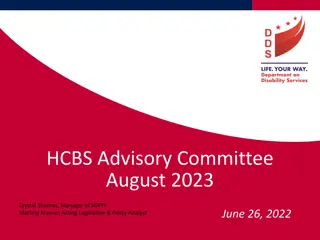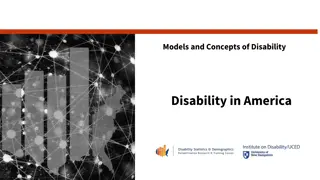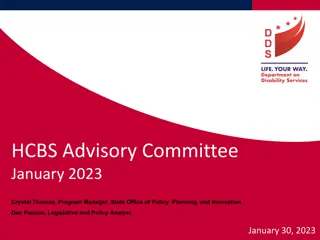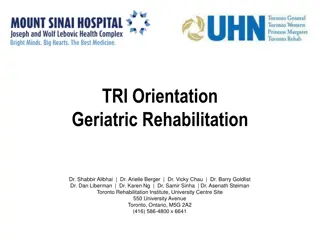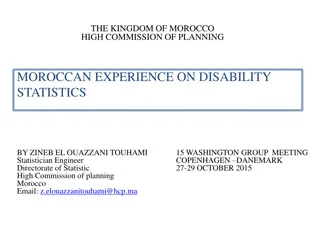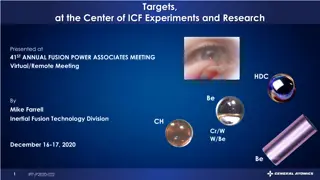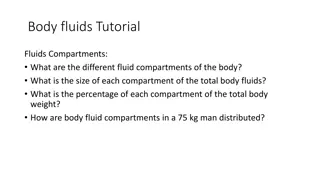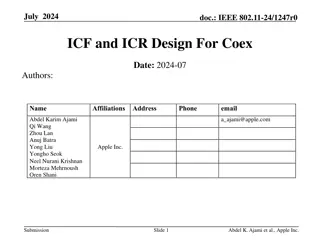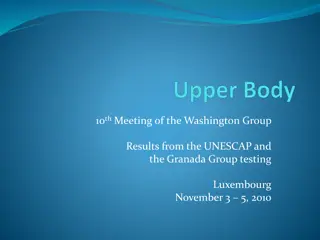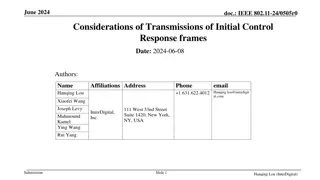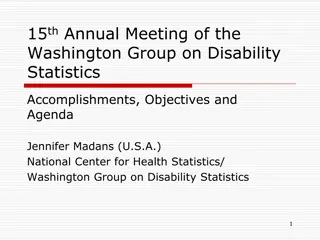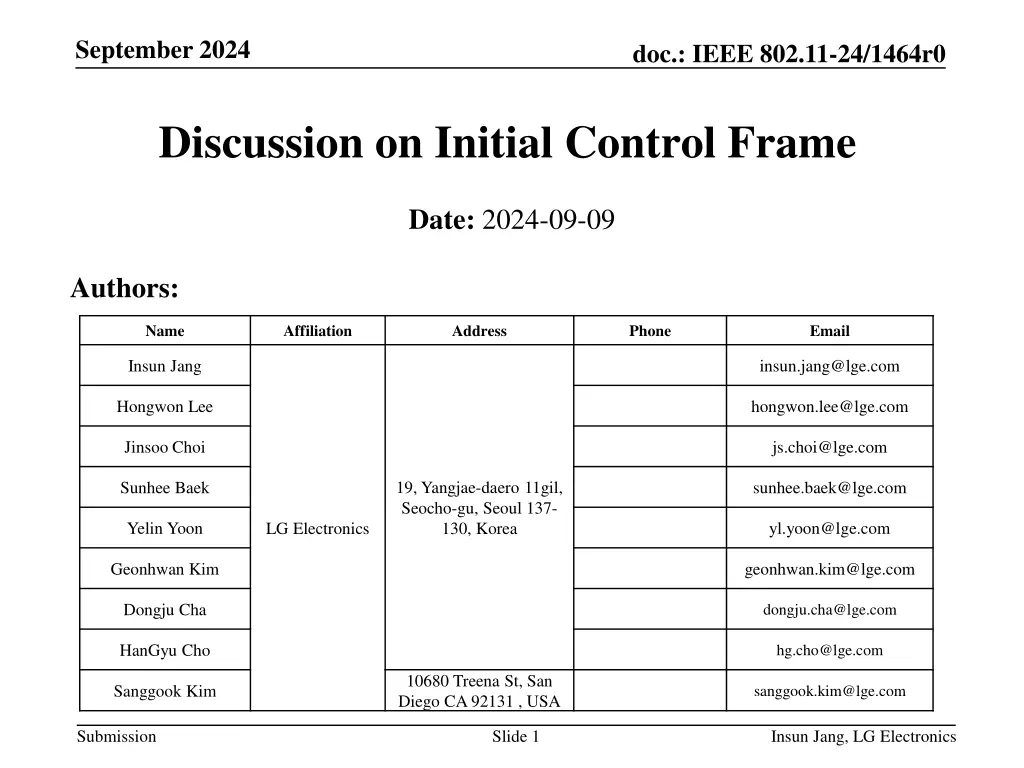
September 2024 IEEE 802.11 Discussion: Initial Control Frame Insights
Delve into the detailed discussion on Initial Control Frame (ICF) and Initial Control Response (ICR) in the September 2024 IEEE 802.11 document. Explore the significance of ICF in supporting Ultra High Rate (UHR) features and the potential contents of ICF and ICR. Gain insights into controlling information for soliciting and delivering to recipient UHR STAs, emphasizing common and per-user info aspects.
Download Presentation

Please find below an Image/Link to download the presentation.
The content on the website is provided AS IS for your information and personal use only. It may not be sold, licensed, or shared on other websites without obtaining consent from the author. If you encounter any issues during the download, it is possible that the publisher has removed the file from their server.
You are allowed to download the files provided on this website for personal or commercial use, subject to the condition that they are used lawfully. All files are the property of their respective owners.
The content on the website is provided AS IS for your information and personal use only. It may not be sold, licensed, or shared on other websites without obtaining consent from the author.
E N D
Presentation Transcript
September 2024 doc.: IEEE 802.11-24/1464r0 Discussion on Initial Control Frame Date: 2024-09-09 Authors: Name Affiliation Address Phone Email Insun Jang insun.jang@lge.com Hongwon Lee hongwon.lee@lge.com Jinsoo Choi js.choi@lge.com 19, Yangjae-daero 11gil, Seocho-gu, Seoul 137- 130, Korea Sunhee Baek sunhee.baek@lge.com Yelin Yoon yl.yoon@lge.com LG Electronics Geonhwan Kim geonhwan.kim@lge.com Dongju Cha dongju.cha@lge.com HanGyu Cho hg.cho@lge.com 10680 Treena St, San Diego CA 92131 , USA Sanggook Kim sanggook.kim@lge.com Submission Slide 1 Insun Jang, LG Electronics
September 2024 doc.: IEEE 802.11-24/1464r0 Introduction Several Contributions have addressed ICF-ICR design that is very important to support some UHR features (e.g., DPS, IDC, Security, NPCA, Multi-AP, DSO, I-FCS, ) [1]-[9] In this contribution, we discuss some details on ICF in terms of Contents Frame & Unified Signaling Submission Slide 2 Insun Jang, LG Electronics
September 2024 doc.: IEEE 802.11-24/1464r0 Recap: ICF-ICR Initial Control Frame (ICF) ICF would solicit some information from recipient STAs and/or carry some control information depending on UHR features Trigger frame has been a powerful candidate as an ICF Initial Control Response (ICR) ICR would work with different functions depending on UHR features, e.g., Informing availability (IDLE) Responding solicited info Confirming changing modes (e.g., DPS) Participating M-AP coordination Multi-STA BA has been a powerful candidate as an ICR, but needs to be discussed more Submission Slide 3 Insun Jang, LG Electronics
September 2024 doc.: IEEE 802.11-24/1464r0 Potential Contents in ICF (UHR) Control Info Soliciting It means control information that should be carried in ICR It would be common to all features and recipient UHR STAs While it prevents each STA from including different control info that can an impact on UL length (if we allow multiple control info in ICR), depending on ICR design it can be discussed whether it is needed, e.g., the size of ICR is fixed (UHR) Control Info Delivered (Per feature) It means control information that should be carried in ICF Depending on features, it can categorized into Common info to addressed STAs and Per-user info, e.g., For IDC (e.g., unavailability), Security (e.g., MIC, PN), and Intermediate FCS, it would be common For M-AP (e.g., expected duration/traffic info) and DSO (e.g., channel), it may be per-user info Note that for some features, existing fields may be used, then their additional fields are not needed Slide 4 Submission Insun Jang, LG Electronics
September 2024 doc.: IEEE 802.11-24/1464r0 Illustration of Control Info Field Example Notes Control: Which information is carried or solicited, (Per-feature) Common Control Info: Common to all STAs (Per-feature) Per-User Control Info: Specific to each STA Delivered info control may be combined with Per-feature info This is a snapshot only for control fields, not the exact location in a frame Submission Slide 5 Insun Jang, LG Electronics
September 2024 doc.: IEEE 802.11-24/1464r0 Choice of ICF We need to consider some requirements 1) Support SU/MU Transmission (including pre-UHR STAs) E.g., Except TF, frames such as BAR are not suitable 2) Solicit TB PPDU that allows to carry solicited information in ICR E.g., MU-RTS TF is not suitable, but if CTS can work depending on features without any information, it is possible 3) Enable to modify frames (without the impact on pre-UHR STAs) It should allow to include one or more control info 4) Align with some mechanisms using ICF (e.g., EMLSR) E.g., Basic, BQRP, are not suitable (as well as New TF variant) By observing the current frames based on requirements above, we think the best frame is BSRP Trigger frame that would work well as ICF However, MU-RTS TF can work without the second requirement Submission Slide 6 Insun Jang, LG Electronics
September 2024 doc.: IEEE 802.11-24/1464r0 Directions to Enhance BSRP Coexistence with Legacy STAs To include additional info in a current BSRP, its format should not be changed, i.e., keeping Common Info/User Info List/Padding without a negative impact on legacy STAs Flexibility of Control Info Signaling should be unified for all (UHR) features, i.e., existing and/or 11bn feature-related information should be included in time Extensibility of Control Info It should allow/enable to extend control info that may be added in the future Submission Slide 7 Insun Jang, LG Electronics
September 2024 doc.: IEEE 802.11-24/1464r0 Common Indication in Enhanced BSRP We first can have an indication whether additional (UHR) control info is included in ICF Basically, it differentiates the enhanced BSRP from the current BSRP only for UHR STAs explicitly UHR STAs can understand whether it includes additional Control info UHR STAs can respond using a specific ICR different from baseline (e.g., Multi- STA BA) As a way, EHT reserved field can be used It would be better not to use many of EHT reserved values (for the future) May discuss to need bits indicating the presence of soliciting info and delivered info How to indicate Option 1: Using Special AID value Option 2: Within Padding field Submission Slide 8 Insun Jang, LG Electronics
September 2024 doc.: IEEE 802.11-24/1464r0 Option 1: Using Special AID(s) For Option 1, Common Control Info We still have many reserved values in AID12 field If we use AIDs are not assigned to STAs (>2007), the Special User Info(s) will be placed after (the last) User Info addressed to STAs Simply, we can use one or more User Info fields with a Special AID It still can work with legacy STAs, but it still has a repetitive default overhead (AID12 field) Alternatively, special AIDs for each feature could be assigned (see Appendix #1) Submission Slide 9 Insun Jang, LG Electronics
September 2024 doc.: IEEE 802.11-24/1464r0 Option 1: Using Special AID(s) (Cont d) For Option 1, Per-User Control Info We should have the same size of User Info field for each STA with its AID and consider To identify whether it is a specific user info field carrying control info different from existing information To place Per-User Control Info field For example, using reserved bit (B25) or placing specific locations (e.g., right after existing user info field or common control info) May need more than user info fields depending on the length of control info Submission Slide 10 Insun Jang, LG Electronics
September 2024 doc.: IEEE 802.11-24/1464r0 Option 2: Within Padding field All UHR control info fields are included right after all 1s with 2octets (baseline), followed by a padding for UHR STAs Less overhead than Option 1, but dynamic padding pattern may impact on legacy STAs (may not be compatible) Especially, Per-User Control Info doesn t have to follow the current format (Examples are shown in Appendix #2) Submission Slide 11 Insun Jang, LG Electronics
September 2024 doc.: IEEE 802.11-24/1464r0 Further Discussion on Control Info in TF Even though BSRP is focused as an ICF on, we can observe most of variants of TF can include the control info with the same direction TF including BSRP can be transmitted during intermediate frame exchanges in a TXOP For example, when events like aperiodic IDC happened, its indication can be carried Therefore, we should not limit the signaling to ICF as BSRP in terms of control info delivery, i.e., TF in some cases it can carry the control info Submission Slide 12 Insun Jang, LG Electronics
September 2024 doc.: IEEE 802.11-24/1464r0 Conclusion We ve discussed contents to be carried in ICF and a frame as ICF ICF can carry soliciting info (to be included ICR) and delivered info depending on features with a control field BSRP Trigger frame can meet some requirements to be used as an ICF BSRP Trigger frame can include the contents by having several options Using Special AID(s) Within Padding field Submission Slide 13 Insun Jang, LG Electronics
September 2024 doc.: IEEE 802.11-24/1464r0 Straw Poll 1 Do you agree to include the following into the 11bn SFD? BSRP Trigger frame as an initial control frame (ICF) indicates soliciting control feedback to be included in a frame in response to the BSRP Trigger frame How to indicate is TBD NOTE: as an example, the one of control feedback can be unavailability Submission Slide 14 Insun Jang, LG Electronics
September 2024 doc.: IEEE 802.11-24/1464r0 Straw Poll 2 Do you agree to include the following into the 11bn SFD? A Trigger frame can carry one or more control feedback (e.g., unavailability) Signaling is TBD Applied variants of Trigger frame are TBD Submission Slide 15 Insun Jang, LG Electronics
September 2024 Appendix #1: Alternative to Option 1: Using Special AID(s) doc.: IEEE 802.11-24/1464r0 Using Special AIDs value per feature We need # of AIDs corresponding to at most # of features and common control, but it still has a repetitive default overhead (AID12 field = 12bits) for each Submission Slide 16 Insun Jang, LG Electronics
September 2024 Appendix #2: Per-User Control Info Example within Padding doc.: IEEE 802.11-24/1464r0 Even though we can follow existing User Info format, within padding it doesn t need to be followed Flexibly the length of per-user control info field can be changed AID12 could be AID11 since it will be AIDs of associated STAs But, it may also consider AID12 fields values for M-AP Submission Slide 17 Insun Jang, LG Electronics
September 2024 doc.: IEEE 802.11-24/1464r0 References [1] 24/834, Some Details on In-Device Coexistence [2] 24/1126, ICF-ICR Discussion for DPS [3] 24/1490, More Consideration of ICR/CRF for in-device-coexistence [4] 24/543, Coexistence Protocols for UHR - follow up [5] 24/857, ICR consideration [6] 24/1226, ICF-ICR design [7] 24/1221, ICF ICR follow up [8] 24/1247, ICF ICR Design For Coex [9] 23/1912, Coordinated TDMA Procedure Submission Slide 18 Insun Jang, LG Electronics

